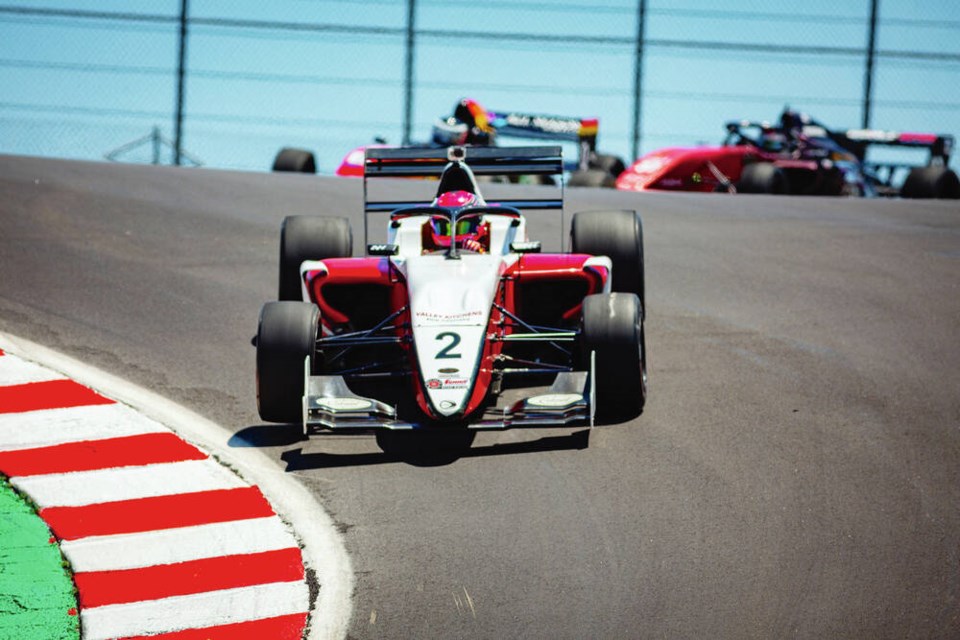Nicole Havrda was 12 when she travelled from her home in Comox to Austria to watch a Formula 1 race with her dad in 2018.
At the time, she was a competitive swimmer training every day for two hours. Her dream was to swim in the Olympics.
But on that trip to Austria, everything changed.
Havrda, now 18, fell in love with motor sports.
“I was like: ‘Dad, I want to do this’ and I actually asked: ‘Can you get me there?’ ” says Havrda, who became the first woman to win a Formula Pro USA Western F3 championship in California last year.
She says it was the sound of the cars driving “super fast” and the atmosphere of the races that gripped her.
She had been go-karting for fun from the age of 10, but after the trip, she started racing go-karts — she and her parents would load up their motor home and head to Chilliwack every weekend to practise and race. At that point, she was driving around the track at about 100 kilometres per hour.
By 12, she was a national go-karting champion.
But after that Austria trip, she was hooked on racecars. At 14, she got her racecar licence to drive sports cars and Formula cars, which are single-seater vehicles with no roof. She races those up to 250 km/h and loves the feel of gravitational force as she laps the track.
She now spends about 200 days each year on the road racing and training in the U.S. and Europe.
In the six years since she started racing go-karts, Havrda has seen more and more women joining the male-dominated sport. While it can be hard sometimes to be on race teams that are mostly men, Havrda said being a woman hasn’t held her back.
“I always say, when you put a helmet on, it doesn’t matter what gender you are. You’re just a racer. No one sees you,” said Havrda, who will spend International Women’s Day at a car dealership in Comox speaking about women in racing.
Even after a big crash last year in California, Havrda had no fear about getting back behind the wheel.
She was coming around a corner behind another racer who was driving significantly slower than she was, forcing her to swerve to avoid him. She slammed into a concrete wall at 220 km/h.
She had a mild concussion that quickly went away and back pain that still lingers.
Her team fixed up the car overnight and she raced the next day, placing third.
“My back was in the most pain possible. I was trying to breathe every corner I could,” she said.
A peak moment in her racing career was participating in an interview on TSN alongside Lewis Hamilton, a seven-time Formula 1 champion.
Havrda spends the equivalent of about one week per month on the race track. The rest of the time, she’s training in the gym, working on her social-media presence to gain sponsorships or riding in a simulator, with a racing seat, pedals, a steering wheel and software to recreate the racing experience.
Havrda does her high school classes online and will graduate this June with her class.
Her parents generally come along for her practices and races, but now that she’s 18, she wants to be a bit more independent.
There’s just a small snag. Despite being a champion racecar driver, she can’t rent a car in most places she travels because she doesn’t have a full licence for operating a regular vehicle.
She still has a couple of years before she can shed the N from her licence in B.C.



